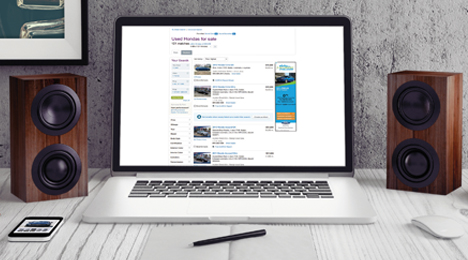Think Like Your Customers: Their Most Influential Sources

Graphics designed by Melissa Borden.
Automotive shoppers, now more than ever, have a wealth of knowledge available at their fingertips.
Where can a dealer place their offerings to find the right customer at the right time? The options in the digital space are virtually unlimited — pun intended.
As part of our journey to help you find the folks most likely to be interested in buying from you, Auto Remarketing set our sights on one of the sources of information frequently utilized by auto shoppers: third-party websites.
This is Part 2 in a series on advertising ideas for dealers. To explore what devices customers are using to shop, check out Part 1.
According to a recent worldwide automotive survey from Accenture, titled What Digital Drivers Want, 37 percent of those surveyed in the United States who were either close to shopping for a new or used vehicle soon (or anticipated the need in the future) said that automotive sites and reading online publications or car magazines were the most influential factors on their decision making process when buying a car.
This influence was fourth in line, following the fact they wanted or needed a car (51 percent), advice/recommendations from friends, family or colleagues (40 percent), and an encounter with a salesman or from visiting the dealership in person (38 percent).
Thirty-four percent of those surveyed also value manufacturers’ websites as well as offline information, while 32 percent were influenced by dealer websites.
When asked which online channel would help make the process easier, the majority (69 percent) pointed to comparison shopping sites.
And that’s where one possible option, third-party automotive sites, come in.
According to a recent study, titled The Digital Influence: How Online Research Puts Auto Shoppers In Control — conducted independently by C+R Research, on behalf of Cars.com — customers who were either in-market shoppers for a new or used vehicle (or had recently purchased a new or used vehicle) said that independent research sites were the leading “go-to” source for information.
The 1,005 shoppers surveyed — with ages ranging from 21 to 60 and split roughly evenly between in-market shoppers and recent buyers — were asked about 24 separate sources they encountered during their vehicle search and ranked the influence of each.
On average, those surveyed said they were influenced by six to seven different sources of information. but only relied on one or two of those sources as a “go-to” source(s).
Two-thirds of the shoppers said that one of their go-to sources was an online source. And 50 percent said their top online source was independent research sites.
Auto Remarketing reached out to another third-party source, Autobytel, to see why that may be the case. When asked why a third-party source may be favored, if not trusted, more than a dealership or manufacturer site, Scott Pechstein, the vice president of national sales for Autobytel, attributed the customer ability to research many different brands through a variety of mediums.
“There is a comfort level associated with unbiased information that doesn’t skew in favor of one brand versus another, which is why consumers continue to rely on third-party information today like they did 20 years ago when Autobytel pioneered the automotive Internet,” Pechstein said.
And this is where dealers can benefit from a partnership with a third-party site. Pechstein said that just in the last four years, more than 3.85 million new and used vehicles were purchased via consumer-submitted leads through the Autobytel network.
And Pechstein’s company is just one of many successful third parties in the market.
Cars.com also conducted a separate impact study along with one of its customers, the Denver-area Groove Automotive Group, titled Unpacking Big Data: Analyzing Online Shopper Behavior Beyond the Last Click.
The study aimed to see if shoppers acted differently when being led to one of Groove’s websites from Cars.com, compared to the behavior of those arriving at the dealer site via other means. This was meant to judge the “quality” of traffic being funneled through the third-party source.
Gabriel Montano, the operations manager at Groove Automotive, said he found that shoppers that ended up on the Groove sites from Cars.com had lower bounce rates, higher page views per session, spent more time on the site and viewed more inventory on the site, suggesting that these were all signs that the traffic from the third-party source were more interested in engaging with the dealership than from other sources.
One purpose that third-party sites like Cars.com, Autobytel and others serve is to help customers sift through vehicle choices online. This can be helpful for dealers trying to expose their inventory to those who are searching around, trying to make up their mind which vehicle they want to go with.
“What we have found in our analysis is that car buyers are generally undecided up to the point of purchase, which means consumers who visit Autobytel are actively narrowing down their choice,” Pechstein said. “For many, this doesn’t occur until the week they actually buy.
“What we have also found is that roughly half of consumers who submit a new-car request end up buying used and vice-versa, and about half who submit a request for a particular brand end up buying a different brand altogether,” he added.
On that note, Groove’s Montano agrees.
“Consumers jump all over the place,” he said. “Having a brand, exposing your brand and having a resource to do so is important for a dealership’s digital marketing strategy.”
Stop in tomorrow to see the final installment of this series where Auto Remarketing will further explore what kind of advertisements and communications customers like to receive from dealers before and after the sale.


